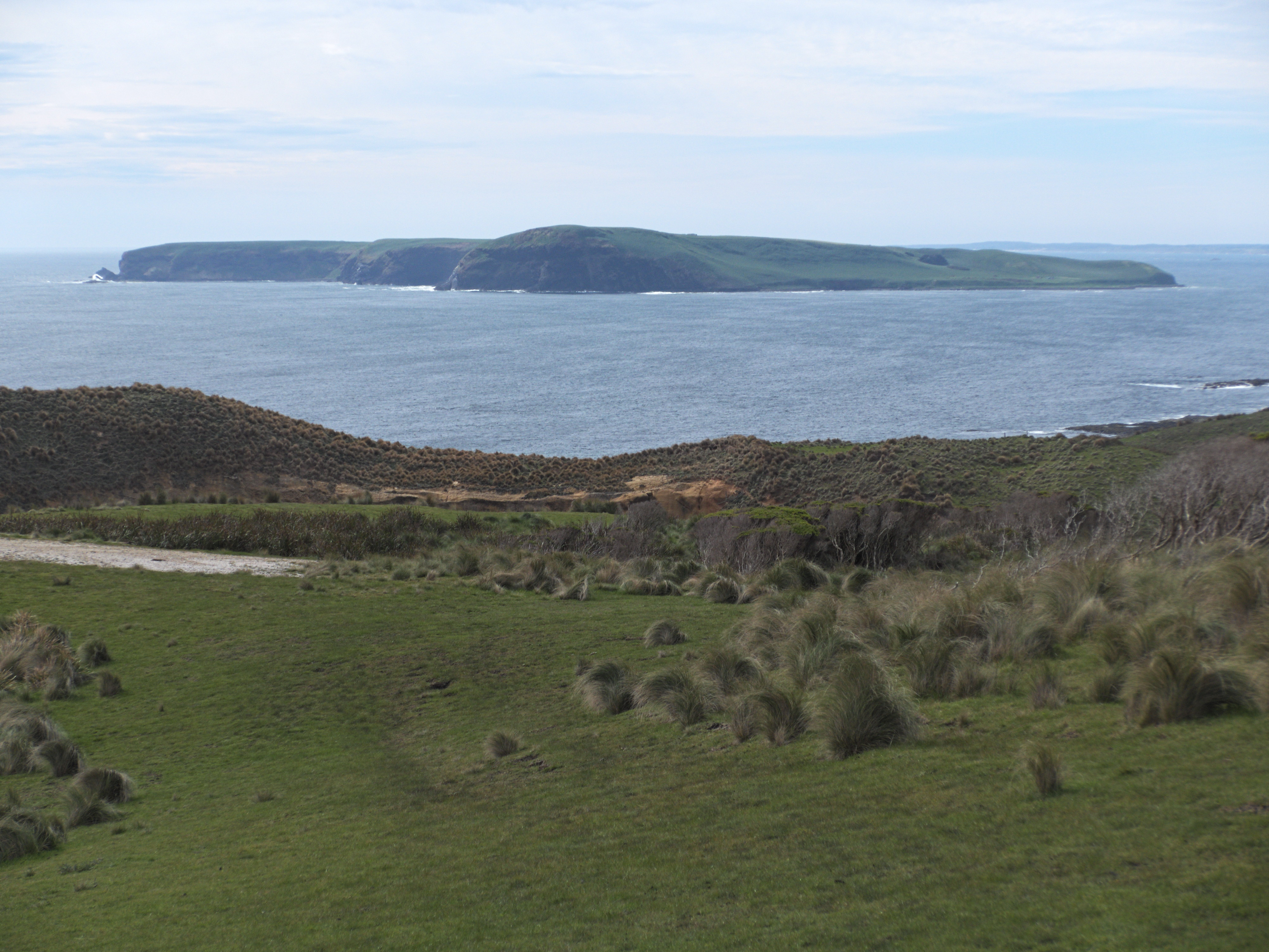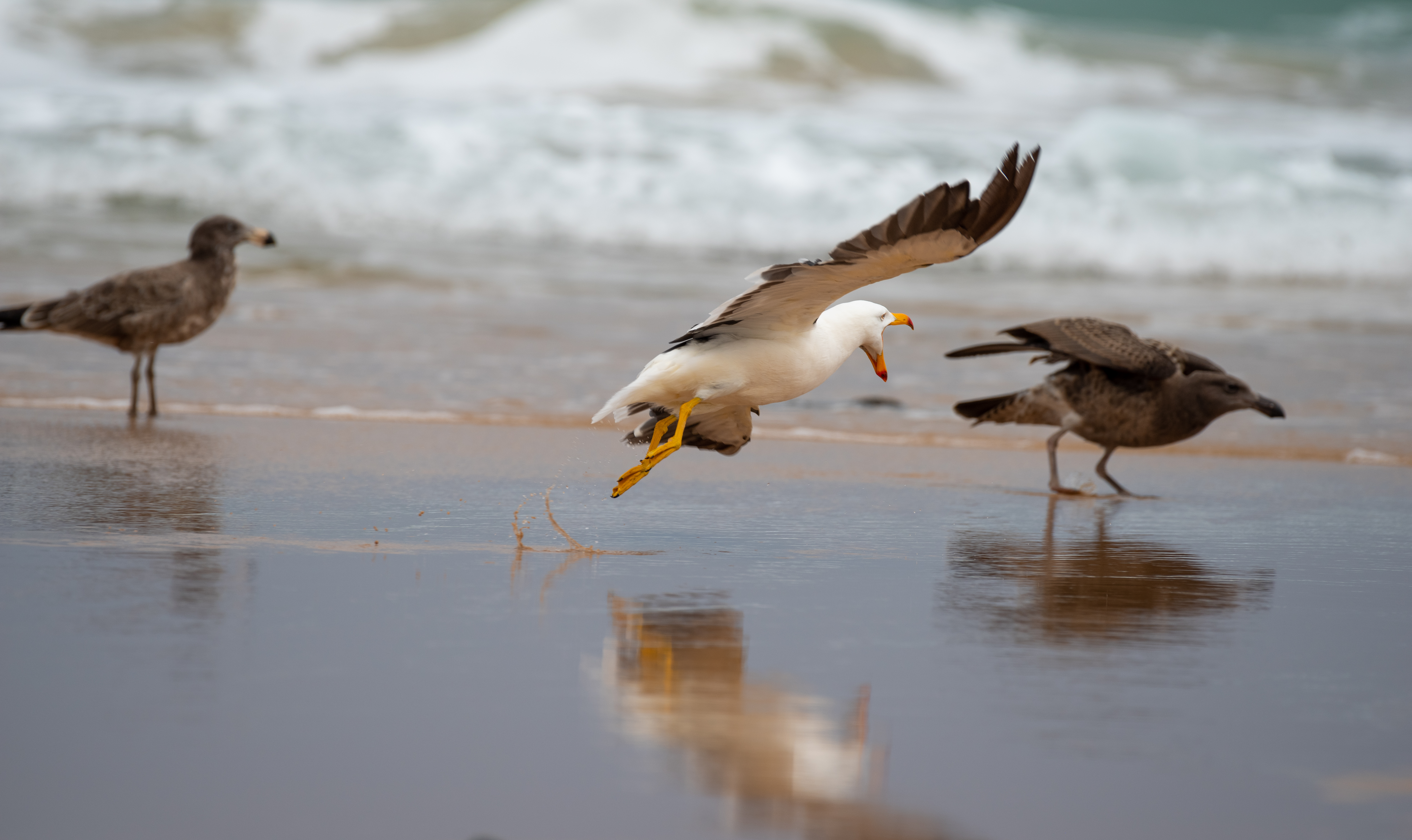|
Trefoil Island
Trefoil Island (in palawa kani : Titima), officially known as titima / Trefoil Island, is an island with an area of 115.79 ha, in south-eastern Australia. It is part of Tasmania’s Trefoil Island Group, lying close to Cape Grim, Tasmania's most north-westerly point, in Bass Strait. It is owned by the Trefoil Island Aboriginal Cooperative and is home to an estimated 1.5 million breeding pairs of short-tailed shearwaters, which are subject to annual muttonbirding activities. Approval is required to visit. There is an airstrip, otherwise small boats can be used on calm days at Kelp Beach. The shoreline is covered with pebbly rocks. Trefoil Island Group Trefoil Island Group consists of: * Trefoil Island * Harbour Islets * Henderson Islets * Little Trefoil Island * Murkay Islets * Seacrow Islet, aka Seacrow Island * Shell Islets * The Doughboys Fauna and flora The island forms part of the Hunter Island Group Important Bird Area. Apart from the short-tailed shearwat ... [...More Info...] [...Related Items...] OR: [Wikipedia] [Google] [Baidu] |
The Doughboys (Tasmania)
The Doughboys are a pair of islands near Cape Grim, the northwestern point of Tasmania, Australia. The western island has an area of and the eastern island has an area of . The two islands form part of the Trefoil Island Group.Brothers, Nigel; Pemberton, David; Pryor, Helen; & Halley, Vanessa. (2001). ''Tasmania's Offshore Islands: seabirds and other natural features''. Tasmanian Museum and Art Gallery: Hobart. In June 2021, the Tasmanian Department of Primary Industries, Parks, Water and Environment, after consultation with local Aboriginal groups, approved the dual naming of the island pair as Koindrim. The dual name is intended to be represented in maps and publications as Koindrim / The Doughboys. This followed the approval in March 2021, after similar consultation, of names for the two islands. The eastern island's new name is Kaninerwidic (pronounced (Ka_nina_widic), while the westernmost one is Karrernootong (pronounced Kara_nu_tong). Fauna The islands are part of t ... [...More Info...] [...Related Items...] OR: [Wikipedia] [Google] [Baidu] |
Pteridium Esculentum
''Pteridium esculentum'', commonly known as bracken fern, Austral bracken or simply bracken, is a species of the bracken genus native to a number of countries in the Southern Hemisphere. ''Esculentum'' means edible. First described as ''Pteris esculenta'' by German botanist Georg Forster in 1786, it gained its current binomial name in 1908. The rhizome of the plant was a staple in traditional Māori diets in New Zealand and was eaten by Indigenous Australians, it is now known to contain the carcinogen ptaquiloside. Morphology ''Pteridium esculentum'' grows from creeping rhizomes, which are covered with reddish hair. From them arise single large roughly triangular fronds, which grow to tall. The fronds are stiff with a brown stripe. Distribution It is found in all states of Australia apart from the Northern Territory, as well as New Zealand, Norfolk Island, Malaysia, Polynesia, and New Caledonia. Within Victoria it is widespread and common to altitudes of . In New South Wa ... [...More Info...] [...Related Items...] OR: [Wikipedia] [Google] [Baidu] |
Poa Poiformis
''Poa poiformis'', commonly known as coast tussock-grass or blue tussock-grass, is a densely tufted, erect, perennial tussock grass, with distinctive blue-green leaves, that grows to about 1 m in height. Its inflorescences are arranged in a dense panicle up to 30 cm long. It is native to coastal southern Australia where it occurs along ocean foreshores, estuaries, dunes and cliffs. ''P. poiformis'' is also found on Kangaroo Island (South Australia) and Lord Howe Island (New South Wales). Varieties * ''Poa poiformis'' var. ''poiformis'' (autonym Autonym may refer to: * Autonym, the name used by a person to refer to themselves or their language; see Exonym and endonym * Autonym (botany), an automatically created infrageneric or infraspecific name See also * Nominotypical subspecies, in zo ...) * ''Poa poiformis'' var. ''ramifer'' D.I.Morris – Trailing coast tussock-grass Var. ''ramifer'' is currently being studied to determine if it is synonymous with va ... [...More Info...] [...Related Items...] OR: [Wikipedia] [Google] [Baidu] |
Tiger Snake
The tiger snake (''Notechis scutatus'') is a large and highly venomous snake of southern Australia, including its coastal islands and Tasmania. These snakes are often observed and locally well known by their banding, black and yellow like a tiger, although the species can be highly variable in colouration and patterning. All populations are classified within the genus ''Notechis'' (Elapidae). Their diverse characteristics have been classified either as distinct species or by subspecies and regional variation. While tiger snakes are usually ground-dwelling, they are able to swim as well as climb into trees and buildings. Taxonomy The genus ''Notechis'' is in the Elapidae, elapid family, venomous snakes with fixed front fangs. The classification of this genus is given as a single and highly variable species, ''Notechis scutatus'', or a second species ''Notechis ater'', and by an arrangement of subspecies or regional morphs. A 2016 genetic analysis showed that the closest relat ... [...More Info...] [...Related Items...] OR: [Wikipedia] [Google] [Baidu] |
Metallic Skink
:''"Metallic skink" may also refer to the garden skink (Lampropholis delicata)''. ''Carinascincus metallicus'', the metallic cool-skink or metallic skink is a species of skink in the family Scincidae. It is endemic to Australia, found in southern Victoria, Australia, Victoria, as well as in Tasmania where it is the most widespread and common lizard, occurring on many offshore islands in Bass Strait as well as the mainland. It gives birth to live young. It is highly variable in colour and pattern, and may be a complex of closely related species.Cogger, H.G. (1979). ''Reptiles and Amphibians of Australia''. Reed: Sydney. Description and Identification The Metallic Skink exhibits a range of colour variations depending on its habitat. It is typically brown with pale or dark streaks, sometimes forming distinct longitudinal stripes along its body. The dorsal scales have a metallic sheen, which gives the species its name. The underside is usually grey or white with dark spots on t ... [...More Info...] [...Related Items...] OR: [Wikipedia] [Google] [Baidu] |
Cape Barren Goose
The Cape Barren goose (''Cereopsis novaehollandiae''), sometimes also known as the pig goose, is a species of goose endemic to southern Australia. It is a distinctive large, grey bird that is mostly terrestrial and is not closely related to other extant members of the subfamily Anserinae. Taxonomy and history The indigenous Jardwadjali people of western Victoria refer to this species as ''toolka''. The Noongar / Nyungar people of south-western Western Australia use the name ''bibib.'' The Cape Barren goose was first formally described by English ornithologist John Latham in 1801 as ''Cereopsis N. Hollandiae''. The species had been earlier reported from the Bass Strait by George Bass and Matthew Flinders in 1798, who referred to it as a " Brent or Barnacle Goose". The taxonomic placement of this species is not yet fully resolved. It is now generally recognised as being a member of the subfamily Anserinae, however, it has also been associated with Tadorninae. When placed with ... [...More Info...] [...Related Items...] OR: [Wikipedia] [Google] [Baidu] |
Pied Oystercatcher
The pied oystercatcher (''Haematopus longirostris'') is a species of oystercatcher. It is a wading bird native to Australia and commonly found on its coastline. The similar South Island pied oystercatcher (''H. finschi'') occurs in New Zealand. Description The name "oystercatcher" is something of a misnomer for this species, because they seldom eat oysters, which are found mainly on rocky coastlines. Pied oystercatchers frequent sandy coastlines, where they feed mainly on bivalve molluscs, which are prised apart with their specially adapted bill. These adaptations allow the Pied oystercatchers to slip their bills between the ventral edges of these shelled organisms, further allowing them to sever the shells and reach the edible flesh inside. This Australian species is easily recognized by the characteristic 5–8 cm long orange-red beak, slender pink legs and black and white plumage. With the wings extended, a white wing-stripe is also visible. The male and female show ... [...More Info...] [...Related Items...] OR: [Wikipedia] [Google] [Baidu] |
Sooty Oystercatcher
The sooty oystercatcher (''Haematopus fuliginosus'') is a species of oystercatcher. It is a wading bird endemic to Australia and commonly found on its coastline. It prefers rocky coastlines, but will occasionally live in estuaries. All of its feathers are black. It has a red eye, eye ring and bill, and pink legs. Taxonomy John Gould described the sooty oystercatcher in 1845. Its species name is the Latin Latin ( or ) is a classical language belonging to the Italic languages, Italic branch of the Indo-European languages. Latin was originally spoken by the Latins (Italic tribe), Latins in Latium (now known as Lazio), the lower Tiber area aroun ... adjective ''fuliginosus'', "sooty". Two subspecies are recognised, the nominate from the coastline of southern Australia and subspecies ''ophthalmicus'' from northern Australia. The southern subspecies is larger and heavier than the northern. The northern one, with a more yellowish eye ring, is found from the Kimberleys across the ... [...More Info...] [...Related Items...] OR: [Wikipedia] [Google] [Baidu] |
Silver Gull
The silver gull (''Chroicocephalus novaehollandiae'') is a gull in Oceania. It is the most common gull of Australia. It has been found throughout the continent, but particularly at or near coastal areas. It is smaller than the Pacific gull (''Larus pacificus''), which also lives in Australia. The silver gull should not be confused with the herring gull, which is called "silver gull" in many other languages (scientific name ''Larus argentatus'', German , French , Dutch ), but is a much larger, robust gull with no overlap in range. Taxonomy It has traditionally been placed in the genus ''Larus'', as is the case with many gulls, but is now placed in the genus ''Chroicocephalus''. Hartlaub's gull (''C. hartlaubii'') of South Africa was formerly sometimes considered to be subspecies of the silver gull. There are three subspecies: * ''C. n. forsteri'' ( Mathews, 1912) – north and northeast Australia, New Caledonia, Loyalty Islands * ''C. n. novaehollandiae'' ( Stephens, ... [...More Info...] [...Related Items...] OR: [Wikipedia] [Google] [Baidu] |
Pacific Gull
The Pacific gull (''Larus pacificus'') is a gull, native to the coasts of Australia. It is moderately common between Carnarvon, Western Australia, Carnarvon in the west, and Sydney in the east, although it has become scarce in some parts of the south-east, as a result of competition from the kelp gull, which has "self-introduced" since the 1940s. Much larger than the ubiquitous silver gull, and much less common, Pacific gulls are usually seen alone or in pairs, loafing around the shoreline, steadily patrolling high above the edge of the water, or sometimes flying high on the breeze to drop a shellfish or sea urchin onto rocks. Diet The gulls' diet consists of a number various fish species and invertebrates. They frequently consume crabs, most often the species ''Ovalipes australiensis'' and ''Paragrapsus gaimardii.'' They also commonly eat ''Platycephalus bassensis'' (sand flatheads) and cephalopods, both of which are sourced from their regular consumption of waste from fish wh ... [...More Info...] [...Related Items...] OR: [Wikipedia] [Google] [Baidu] |
Little Penguin
The little penguin (''Eudyptula minor'') is the smallest species of penguin. It originates from New Zealand. It is commonly known as the fairy penguin, little blue penguin, or blue penguin, owing to its slate-blue plumage and is also known by its Māori language, Māori name . It is a Neritic zone, marine neritic species that dives for food throughout the day and returns to burrows on the shore at dusk, making it the only Nocturnality, nocturnal penguin species on land. The Eudyptula novaehollandiae, Australian little penguin (''Eudyptula novaehollandiae''), from Australia and the Otago region of New Zealand, is considered a separate species. ''Eudyptula minor'' feathers are dense in Melanosome, melanosomes, which increase water resistance and give them their unique blue colour. Taxonomy The little penguin was first described by German naturalist Johann Reinhold Forster in 1781. Several subspecies are known, but a precise classification of these is still a matter of dispute. ... [...More Info...] [...Related Items...] OR: [Wikipedia] [Google] [Baidu] |






